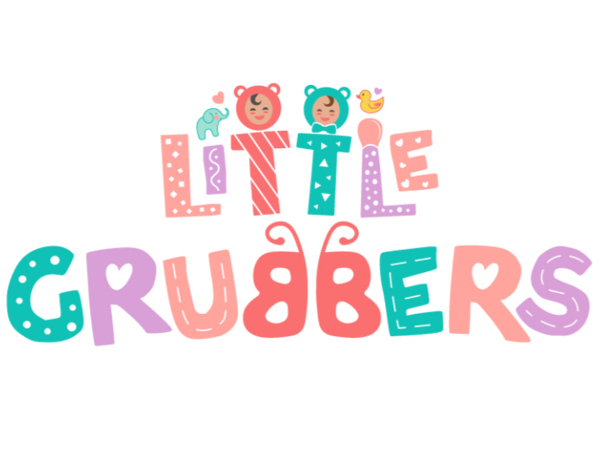Starting the Solid Food Adventure
Introducing solids to your baby is a significant milestone. It’s an exciting step toward independence and a chance to explore new flavors and textures. However, knowing when and how to start can feel overwhelming. With the right approach—and tools like the Little Grubbers 3-in-1 Baby Spoon™—you can make this transition smooth and enjoyable.
This guide will cover the do’s and don’ts of starting solids, offering actionable tips to help you and your baby thrive during this exciting time.
The Do’s of Introducing Solids
1. Do Wait for the Right Time
Most babies are ready for solids around 6 months, though some may show signs of readiness earlier. Key readiness cues include:
- Sitting up with minimal support.
- Showing interest in food (e.g., reaching for your plate).
- Loss of the tongue-thrust reflex (pushing food out of the mouth).
Pro Tip: Consult your pediatrician before starting solids to ensure your baby is ready.
2. Do Start with Single-Ingredient Foods
Introduce one new food at a time and wait 3-5 days before trying another to monitor for allergies. Great first foods include:
- Mashed avocado.
- Pureed sweet potatoes.
- Iron-fortified baby cereals.

3. Do Make Mealtime Fun
Create a positive environment by making mealtime a stress-free and interactive experience. Talk to your baby, smile, and encourage them as they explore new flavors.
Pro Tip: Use colorful, baby-friendly utensils like the Little Grubbers 3-in-1 Baby Spoon™ to make self-feeding easier.
4. Do Offer a Variety of Textures
Gradually transition from smooth purees to thicker textures and small soft pieces as your baby grows. This helps develop chewing skills and introduces them to the variety of food they’ll enjoy later.

The Don’ts of Introducing Solids
1. Don’t Rush the Process
Starting solids is a gradual process. Breastmilk or formula should remain the primary source of nutrition until around 12 months. Solids are for practice and exploration during the first year.
2. Don’t Add Salt or Sugar
Babies don’t need added salt or sugar in their diets. Stick to natural flavors and avoid processed foods.
Pro Tip: If your baby doesn’t like a new food, try offering it again later—sometimes it takes several attempts for them to accept it.
3. Don’t Offer Certain Foods Too Early
Avoid these foods for babies under 12 months:
- Honey (risk of botulism).
- Cow’s milk as a primary drink.
- Whole nuts or hard foods (choking hazard).
4. Don’t Force Feed
Respect your baby’s cues. If they turn away or close their mouth, it’s a sign they’ve had enough. Pushing food can create negative associations with eating.
Tips for Success: Setting You and Your Baby Up for Success
- Stick to a Routine: Create a consistent feeding schedule to help your baby feel secure.
- Be Patient: Every baby is different—some take to solids quickly, while others need more time.
- Use the Right Tools: The Little Grubbers 3-in-1 Baby Spoon™ is perfect for encouraging self-feeding and making mealtime more enjoyable.
Your Partner in the Solids Journey
Introducing solids is a rewarding adventure that lays the foundation for healthy eating habits. By following these do’s and don’ts, you can help your baby develop a positive relationship with food.
Ready to make mealtime easier and more fun? Check out the Little Grubbers 3-in-1 Baby Spoon™—the perfect tool for your baby’s first bites!

